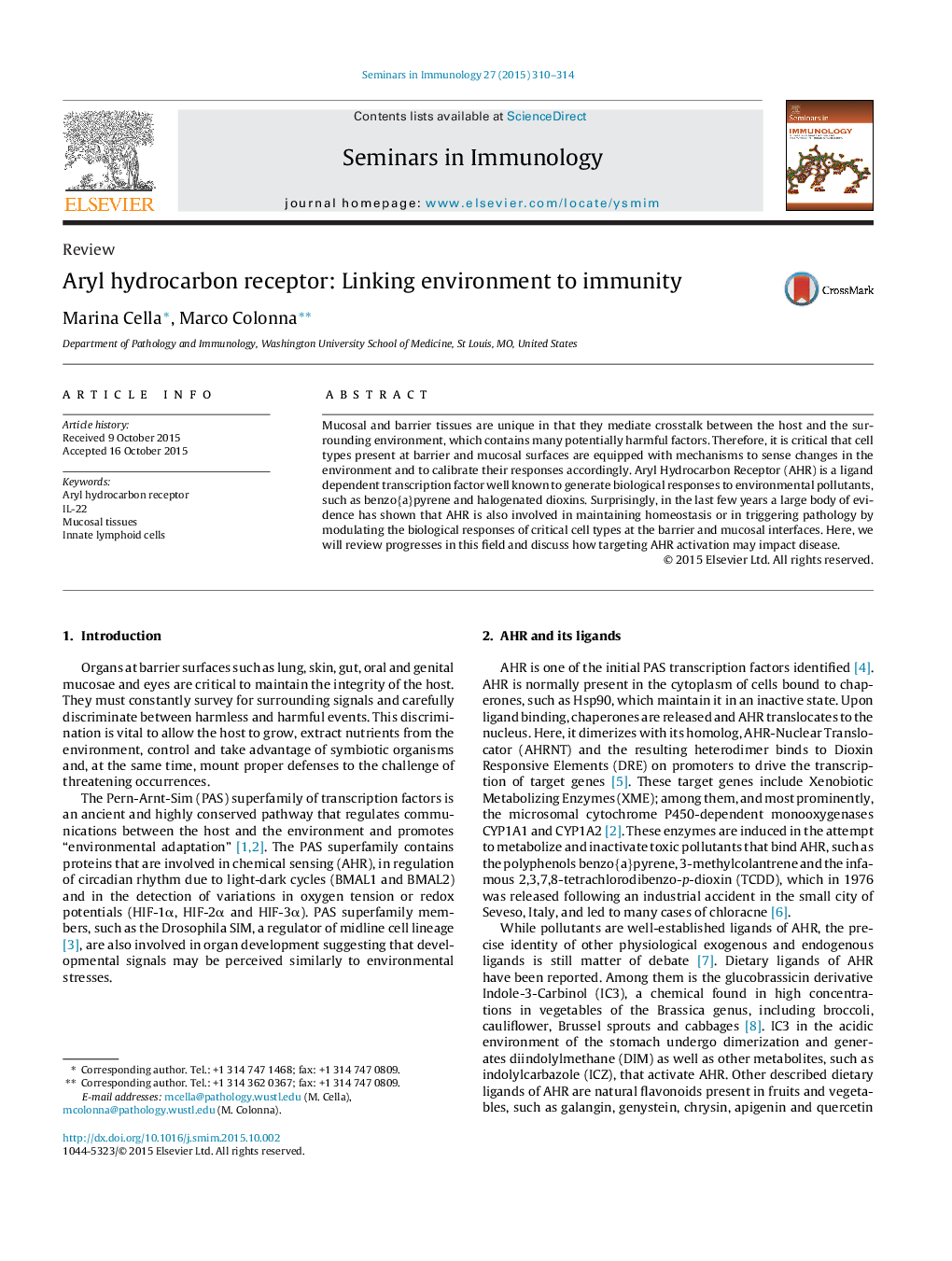| Article ID | Journal | Published Year | Pages | File Type |
|---|---|---|---|---|
| 3391344 | Seminars in Immunology | 2015 | 5 Pages |
•AHR links environmental clues to host immune responses.•AHR is activated by exogenous and endogenous ligands; their interplay is still poorly understood.•Different AHR ligands may differentially influence autoimmune diseases.•AHR signaling affects multiple immune cell types, including dendritic cells, T cells and innate lymphoid cells.
Mucosal and barrier tissues are unique in that they mediate crosstalk between the host and the surrounding environment, which contains many potentially harmful factors. Therefore, it is critical that cell types present at barrier and mucosal surfaces are equipped with mechanisms to sense changes in the environment and to calibrate their responses accordingly. Aryl Hydrocarbon Receptor (AHR) is a ligand dependent transcription factor well known to generate biological responses to environmental pollutants, such as benzo{a}pyrene and halogenated dioxins. Surprisingly, in the last few years a large body of evidence has shown that AHR is also involved in maintaining homeostasis or in triggering pathology by modulating the biological responses of critical cell types at the barrier and mucosal interfaces. Here, we will review progresses in this field and discuss how targeting AHR activation may impact disease.
